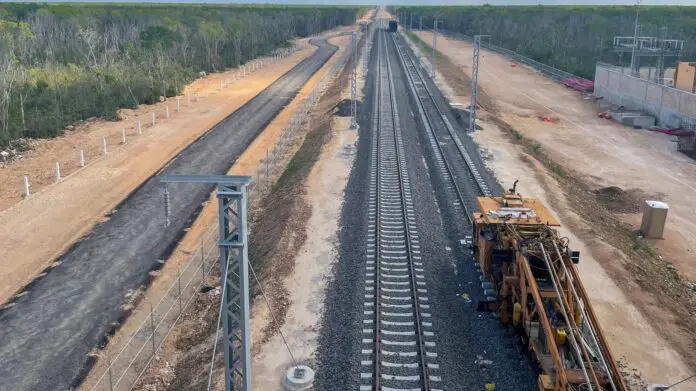Experts from the Yucatán Scientific Research Center report that along the train’s route, 470,000 tons of carbon have been released. The Mayan Train deforested more than 11,000 hectares in the southeast, releasing around 470,000 tons of carbon, according to the Yucatan Scientific Research Center (CICY), which belongs to CONACYT.
The researchers point out that Section 5, between Cancun and Tulum, is the one with the highest carbon release per hectare, while Section 7, from Bacalar to Escárcega, has had a significant impact on Calakmul Biosphere Reserve.
The project, which covers five states and spans over 1,500 kilometers, generated a devastating forest loss that has been revealed by studies as the works approach their end.
Researchers José Luis Hernández-Stefanoni, Juan Andrés Mauricio, Fernando Tun-Dzul, Francisco Chi-May, and Juan Manuel Dupuy created a map of forest carbon density for the construction of the Mayan Train, with which they initially calculated the amount of carbon from the project.
The study details that the release of carbon to the atmosphere depends on the type of flora: the subperennifolia medium forest, which comprises almost half of the deforested vegetation, has a higher carbon density due to its greater height; in other words, the felling of trees between 15 and 25 meters in the Yucatan Peninsula was the most recorded during the construction of the Mayan Train.
The Tramo 5 (Cancun-Tulum) has the highest carbon density per hectare (43.6 tons/ha), compared to the other sections, and contributes a larger proportion to the total amount of carbon removed, according to the researchers from CICY.
Section 5 has been where the most damage has been recorded. The government proposed reforestation around 485 hectares with the vegetation cleared in Section 5, but the Internal Control Body (OIT) of the National Tourism Development Fund (FONATUR) could not verify even the existence of the land for this measure.
Additionally, environmentalists such as Elias Siebenborn have documented the installation of a perimetral mesh on the slopes of the train passage, which hinders the natural passage of fauna that has already caused the death of at least one pair of animals in the area of the train.
“We demand removal of the cyclonic mesh in areas with elevated viaducts and demand they stop the secrecy and lies about this issue,” the environmentalist said.
While the concentration of carbon is higher in Section 5, the extension of the seventh segment, which goes from Bacalar to Escárcega was the one that released more carbon related to deforestation, with 102.4 million tons.
The specialists emphasize that the impact of Section 7 is potentially greater not only due to the carbon released due to deforestation of 2,500 hectares, but also for the subsequent generation of a development pole in the vicinity of Calakmul station.
“It’s especially worrying in the case of Tramo 7 due to the impact this would have on Calakmul Biosphere Reserve, the largest and most important one in the Yucatan Peninsula,” they warned.
In summary, the carbon emission linked to deforestation of the forest is estimated at more than 470,000 tons of carbon, and although the CICY study is one of the latest and with less error margin, researchers estimate that it is necessary to make a more exhaustive report that considers the areas deforested in the construction of warehouses, equipment and other infrastructure used for the construction of the train.
In addition, it is necessary to consider the impact that development poles will have, which contemplate settlements in areas adjacent to the construction of the Mayan Train.
Source: El Financiero






